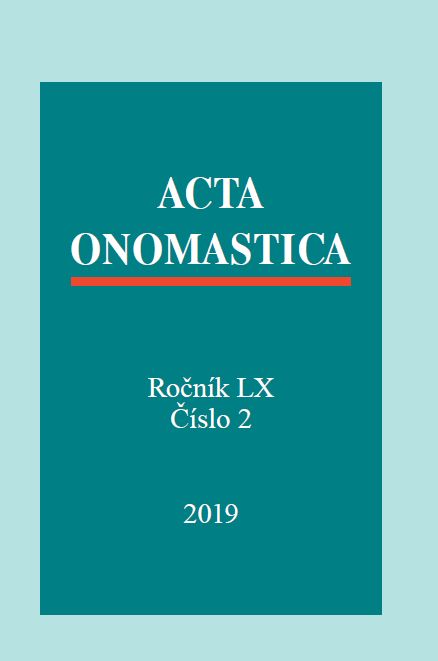метафоризація граматичного значення роду антропонімів як засіб вираження оцінки (на прикладі моделей «хтось (ім. чол. роду) у спідниці / у панчохах / у сукні», «хтось (ім. жін. роду) у штанах»)
Grammatical meaning metaphorisation of the anthroponym family as an evaluation tool (on the example of the models ‘someone (a noun of the masculine gender) in a skirt / in stockings/in a dress’, ‘someone (a noun of the feminine gender) in pants’)
Author(s): Oksana KhalimanSubject(s): Language and Literature Studies, Sociolinguistics
Published by: AV ČR - Akademie věd České republiky - Ústav pro jazyk český
Keywords: anthroponym; grammatical meaning; masculine and feminine genders; evaluation; the Ukrainian language
Summary/Abstract: This article deals with the peculiarities of the metaphorised use of grammatical meanings of masculine and feminine genders in anthroponyms (on the example of the models ‘someone (a noun of the masculine gender) in a skirt / in stockings / in a dress’, ‘someone (a noun of the feminine gender) in pants’) as an evaluation tool in modern journalistic and artistic discourses of the Ukrainian language. The described grammatical feature originates from the contradiction between the grammatical gender meaning and the opposite sex of the indicated person which presents them in specific evaluating shades. In the process of metaphorisation, the grammatical meaning models the corresponding assessment and pragmatic meanings. Due to gender associations formed in ancient times, the usage of feminine forms for males leads to modelling a negative evaluation through the equalisation of the male to the female. The usage of masculine forms for females is carried out both for a positive and a negative evaluation: a positive one when comparing a woman to a man as a strong personality and a negative one when referring to her as a rude personality with femininity contradicting features. Furthermore, we observe that the meanings are superordinate to one another (e.g. «in a skirt» is alien to a man). The analysis of constructions in modern journalism proves a use of the metaphorised forms of masculine gender proper names for a woman, at the same time the figurative use of feminine gender proper names applied for a man does not prove to be productive.
Journal: Acta Onomastica
- Issue Year: LX/2019
- Issue No: 2
- Page Range: 221-232
- Page Count: 12
- Language: Ukrainian

